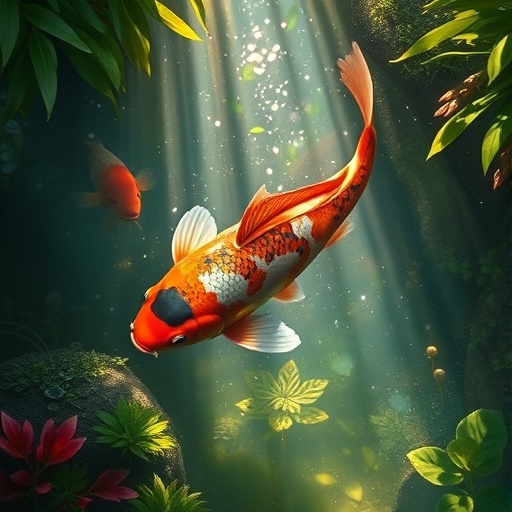Koi fish are often referred to as “living jewels” due to their vibrant, shimmering scales and elegant presence. Originating from Japan, these ornamental fish have become beloved around the world, symbolizing strength, perseverance, and prosperity. With a history rooted in centuries of careful breeding and cultural admiration, koi offer more than just visual appeal—they represent a harmonious blend of art and nature.
A Glimpse into Koi History
Koi, scientifically known as Cyprinus rubrofuscus, are a type of carp that were initially bred for food in ancient China. However, it was in Japan where selective breeding transformed them into the stunning varieties we know today. The word “koi” itself means “carp” in Japanese, but these fish have evolved into a beloved symbol that reflects beauty and endurance. Stories about koi swimming upstream and transforming into dragons at the top of waterfalls are legendary, reinforcing their association with strength and determination.
Key Characteristics of Koi
Koi come in an array of colors, each with its own symbolism. The most admired types are those with brilliant patterns of red, black, white, and gold. Popular varieties include:
- Kohaku: White-bodied koi with red markings, known for their simplicity and elegance.
- Taisho Sanke (Sanke): Similar to Kohaku but with black spots that add contrast.
- Showa Sanshoku (Showa): Black-bodied koi with red and white patterns that create a striking, balanced look.
- Chagoi: Often brown or bronze, Chagoi are known for their friendly nature and rapid growth.
The scales of koi also contribute to their aesthetic. Metallic-scaled koi, such as Ogon (all-gold or platinum varieties), captivate observers with their gleaming, reflective bodies.
Creating the Perfect Koi Habitat
For koi to thrive, their habitat must be carefully designed. A koi pond should be at least three feet deep to allow ample space for swimming and temperature regulation. Ponds should include areas of shade and plants to mimic their natural surroundings and provide shelter.
Water Quality Management: Maintaining clear, oxygenated water is crucial. High-performance filtration systems help remove waste and maintain ideal ammonia and nitrate levels. Regular water testing ensures the pH stays between 7.0 and 8.0 and that oxygen levels remain sufficient.
Feeding Routines: Koi are omnivorous and require a balanced diet rich in protein, vitamins, and minerals. High-quality pellets form the base of their diet, supplemented by vegetables like lettuce and fruits such as watermelon. Overfeeding can lead to poor water quality, so feeding should be moderated to what the koi can consume within five minutes.
Seasonal Adjustments: Koi fish have different needs as the seasons change. In warmer months, they are active and feed frequently, but as temperatures drop, their metabolism slows. In colder climates, a pond heater or de-icer is essential to maintain oxygen flow during winter and prevent a complete ice cover.
The Joy of Koi Keeping
Owning koi is more than a hobby; it’s an art form that brings tranquility and beauty to any space. Watching koi swim gracefully can have a meditative effect, allowing owners to appreciate nature’s artistry. Koi can live for decades, with some reaching over 50 years, creating a lifelong relationship between the fish and their keepers. The dedication involved in their care fosters a deep sense of fulfillment and connection to these magnificent creatures.
Whether you’re drawn to koi for their storied history, their striking beauty, or the peaceful ambiance they create, these fish continue to captivate hearts and gardens worldwide.

